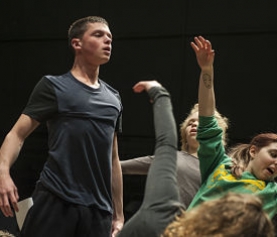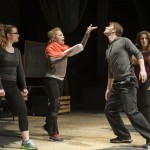
Let’s Go to the Source
The Wakefield Corpus Christi Cycle is a collection of plays that encompass the biblical stories of the creation, fall, and redemption of man. The surviving medieval text from Wakefield dates from about the late 1400’s, or earlier, and was performed in the town of Wakefield in Yorkshire. There are similar texts from the towns of York and Chester, as well as a text called the N-Town cycle that historians theorize traveled among smaller English towns; “N” stands for “nomen,” a medieval version of [insert town name here].
By the end of the sixteenth century, these plays were extraordinarily popular. They helped disseminate church teachings to a largely illiterate population; because they were composed from biblical and non-biblical texts they often helped fill gaps in the Bible’s narrative; and they also served to celebrate the real presence of the body of Christ in the Eucharist at a time when the principle of transubstantiation was a relatively new addition to church doctrine. At times reverent and solemn, at others bawdy and celebratory, performances could last anywhere from 24-72 hours, featuring elaborate sets, paid actors (evidenced in the York house books), and financial, material, and human resources from every guild in town.
The Annunciation embodies the solemn/religious and festival/celebratory spirit of the medieval Corpus Christi pageant; Mary appears, reverent and pure, alongside Joseph, portrayed as an old man who speaks largely in innuendos, complaining about “kids these days.” This combination of the divine and the human speaks to an inherent complexity in these ancient play texts that mirrors an equally complex perception of religion, divinity, and humanity in medieval Europe.








